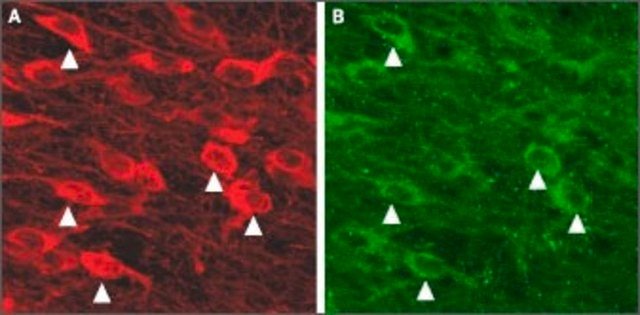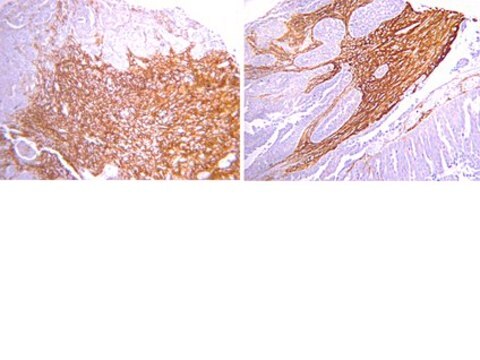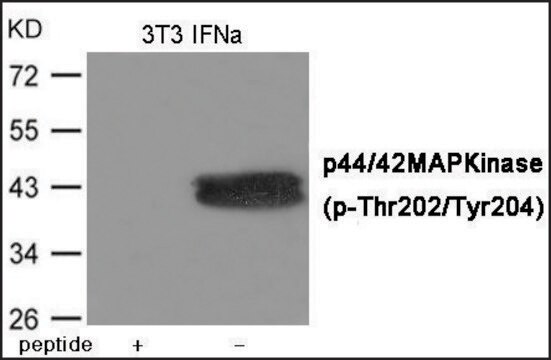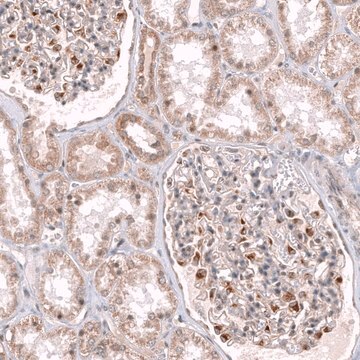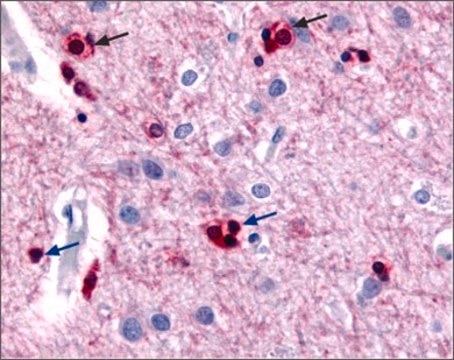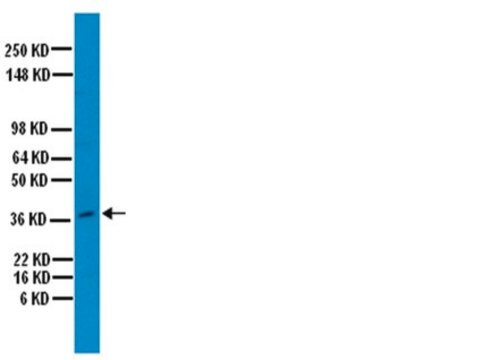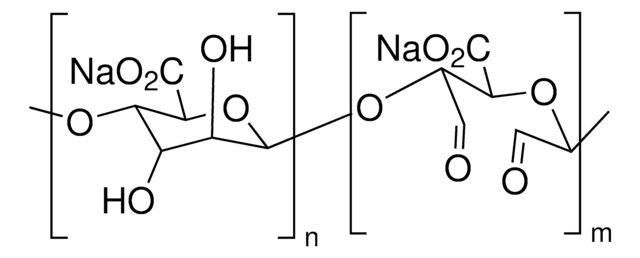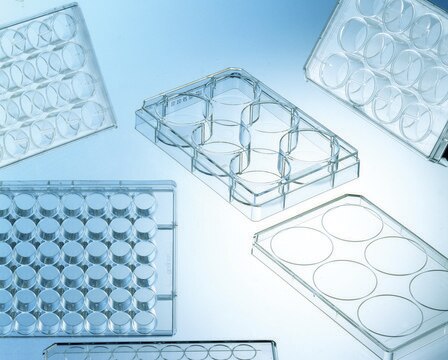AB5350
Anti-Potassium Channel SK3 Antibody
Chemicon®, from rabbit
Synonym(s):
KCa3, Kcnn3, SKCa3
Sign Into View Organizational & Contract Pricing
All Photos(1)
About This Item
UNSPSC Code:
12352203
eCl@ss:
32160702
NACRES:
NA.41
Recommended Products
biological source
rabbit
Quality Level
antibody form
affinity purified immunoglobulin
antibody product type
primary antibodies
clone
polyclonal
purified by
affinity chromatography
species reactivity
human, rat
manufacturer/tradename
Chemicon®
technique(s)
western blot: suitable
NCBI accession no.
UniProt accession no.
shipped in
wet ice
target post-translational modification
unmodified
Gene Information
human ... KCNN4(3783)
Specificity
Recognizes SK3. The epitope specific for SK3 is not present in any other known proteins. The immunogen sequence is identical in mouse and porcine.
Immunogen
Highly purified peptide corresponding to residues 2-21 of human SK3 (Accession Q9UGI6).
Application
Anti-Potassium Channel SK3 Antibody detects level of Potassium Channel SK3 & has been published & validated for use in WB.
Research Category
Neuroscience
Neuroscience
Research Sub Category
Ion Channels & Transporters
Ion Channels & Transporters
Western blotting: 1.0-1.5 μg/mL (1:200-1:300)
Dilutions should be made using a carrier protein such as BSA (1-3%).
Optimal working dilutions must be determined by the end user.
Dilutions should be made using a carrier protein such as BSA (1-3%).
Optimal working dilutions must be determined by the end user.
Physical form
Affinity purified immunoglobulin. Lyophilized from PBS, pH 7.4, containing 1% BSA, 5% sucrose and 0.025% sodium azide. Reconstitute with 200 μL of sterile distilled water. Centrifuge antibody preparation before use (10,000 x g for 5 min).
Storage and Stability
Maintain lyophilized material at -20°C for up to 6 months. After reconstitution maintain at -20°C in undiluted aliquots for up to 6 months. Avoid repeated freeze/thaw cycles.
Analysis Note
Control
CONTROL ANTIGEN: Included free of charge with the antibody is 20 μg of control antigen (lyophilized powder). Reconstitute with 100 μL of sterile distilled water. For negative control, preincubate 1 μg of purified peptide with 1 μg of antibody for one hour at room temperature. Optimal concentrations must be determined by the end user.
CONTROL ANTIGEN: Included free of charge with the antibody is 20 μg of control antigen (lyophilized powder). Reconstitute with 100 μL of sterile distilled water. For negative control, preincubate 1 μg of purified peptide with 1 μg of antibody for one hour at room temperature. Optimal concentrations must be determined by the end user.
Other Notes
Concentration: Please refer to the Certificate of Analysis for the lot-specific concentration.
Legal Information
CHEMICON is a registered trademark of Merck KGaA, Darmstadt, Germany
Disclaimer
Unless otherwise stated in our catalog or other company documentation accompanying the product(s), our products are intended for research use only and are not to be used for any other purpose, which includes but is not limited to, unauthorized commercial uses, in vitro diagnostic uses, ex vivo or in vivo therapeutic uses or any type of consumption or application to humans or animals.
Not finding the right product?
Try our Product Selector Tool.
Certificates of Analysis (COA)
Search for Certificates of Analysis (COA) by entering the products Lot/Batch Number. Lot and Batch Numbers can be found on a product’s label following the words ‘Lot’ or ‘Batch’.
Already Own This Product?
Find documentation for the products that you have recently purchased in the Document Library.
Adam S Deardorff et al.
The Journal of physiology, 599(5), 1391-1420 (2021-01-16)
The spatial and temporal balance of spinal α-motoneuron (αMN) intrinsic membrane conductances underlies the neural output of the final common pathway for motor commands. Although the complete set and precise localization of αMN K+ channels and their respective outward conductances
S Shekar Dukkipati et al.
The Journal of physiology, 596(9), 1723-1745 (2018-03-05)
Motoneuron soma size is a largely plastic property that is altered during amyotrophic lateral sclerosis (ALS) progression. We report evidence of systematic spinal motoneuron soma size plasticity in mutant SOD1-G93A mice at various disease stages and across sexes, spinal regions
K G Chandy et al.
Molecular psychiatry, 3(1), 32-37 (1998-03-10)
Many human hereditary neurodegenerative diseases are caused by expanded CAG repeats, and anonymous CAG expansions have also been described in schizophrenia and bipolar disorder. We have isolated and sequenced a novel human cDNA encoding a neuronal, small conductance calcium-activated potassium
Our team of scientists has experience in all areas of research including Life Science, Material Science, Chemical Synthesis, Chromatography, Analytical and many others.
Contact Technical Service